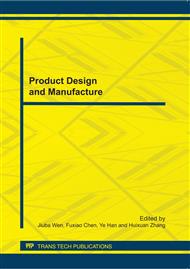p.243
p.248
p.254
p.258
p.263
p.269
p.275
p.280
p.284
Stability Analysis for Pillars during the Process of Panel Mining Based on Dynamic Fuzzy Reliability
Abstract:
Panel mining requires constructing lots of artificial pillars in underground metal mines. Along with the development of the mining process the stress-strain state of pillars changes constantly. Finite element numerical simulation with Midas/GTS software is used to analyze the stability of the pillar during the entire process of panel mining and consider randomness and fuzziness for material parameters of concrete and ore rock to get stress distribution in the pillar. In this paper, the performance function and equation of dynamic fuzzy reliability for a pillar in the whole mining process are established and are solved by a program developed with the MATLAB software. Applying the proposed theory and procedures to dynamic fuzzy reliability analysis and calculation of the pillar was set in panel mining under complex conditions in Zhao Tong Lead-Zinc mine. The results indicate that dynamic fuzzy reliability can better reflect the pillar stability during the entire process of panel mining and the proposed theory and procedures are effective in evaluating the dynamic fuzzy reliability.
Info:
Periodical:
Pages:
263-268
Citation:
Online since:
October 2011
Authors:
Price:
Сopyright:
© 2012 Trans Tech Publications Ltd. All Rights Reserved
Share:
Citation:


